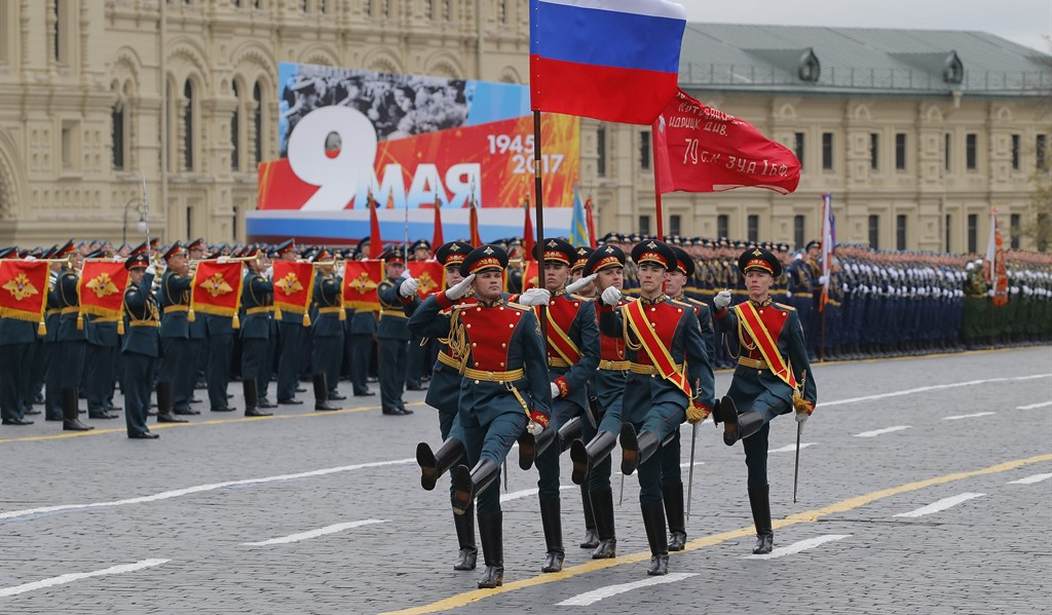We are now six weeks into the “three hour tour” that Russian President Vladimir Putin greenlighted for February 24. The operation seemed simple enough. It was supposed to crush Ukraine, demolish its army, replace its president with a Russian sockpuppet, and carve a large chunk out of that country for assimilation into Russia proper. Most ReallySmartPeople™ thought the operation was supposed to end in about 72 hours. The early moves by the Russians, like very light use of preparatory fires and carrying out an air assault on the outskirts of Kiev on the first day, show that resistance was not expected. Dress uniforms recovered from captured Russian vehicles hint that it wasn’t just Western “analysts” who anticipated more of a show of force than a real sh**-kicker of a war.
Over the course of the six weeks, the Russian forces have terminated their efforts to capture Kiev–I know, I know, the attack on Kiev was a clever feint to distract Ukraine from the real objective; it was so brilliant that the Russians burned up an airborne battalion at Hostomel Airport just to make it look real–and withdrawn those forces into Belarus and Russia for rebuilding. The plan, according to the Russian General Staff, is to shift those forces to Donbas (read Russia’s General Staff Claims Invasion Objectives ‘Mainly Accomplished’ and Phase II of Ukraine Invasion Is Starting), that is, the heavily Russian area of Eastern Ukraine, and “liberate” it from the nazis in Kiev (read Kremlin Newspaper and a Putin Confidant Endorse Genocide as Russia’s Final Solution to the Ukraine Problem).
Maximum extent of Russian advance in UKR compared to today. pic.twitter.com/EaCB0lkaLJ
— streiff (@streiffredstate) April 7, 2022
According to some sources, Putin has put out the word that he wants to be able to declare some significant progress by May 9, the day that Russia celebrates the role of the vanished USSR in the demise of Nazi Germany. Get it? Germany=Nazis, Ukraine=Nazis. I just wanted to make sure you didn’t miss the subtlety of it all.
CNN:
Russia has revised its Ukraine war strategy to focus on trying to take control of the Donbas and other regions in eastern Ukraine with a target date of early May, according to several US officials familiar with the latest US intelligence assessments.
More than a month into the war, Russian ground forces have been unable to keep control of areas where they have been fighting. Russian President Vladimir Putin is under pressure to demonstrate he can show a victory, and eastern Ukraine is the place where he is most likely to be able to quickly do that, officials say. US intelligence intercepts suggest Putin is focused on May 9, Russia’s “Victory Day,” according to one of the officials.
US officials said the alleged war criminal wants to coincide a victory with the parade in Red Square on May 9, which is held to mark the Nazis’ surrender in WWII. They said it could explain why the Russian despot’s forces have pulled back from the Kyiv region to concentrate on the east of Ukraine after weeks of fighting, The Times reported.
Vladimir Putin hopes to have a battlefield win in eastern Ukraine within the next month so he can celebrate it on Russia’s annual Victory Day parade in Moscow. Pictured: Victory Day parade in
It is likely Putin thinks a battlefield win in the Donbas region in the east of Ukraine is more realistic because more of the existing Ukrainian population there is pro-Russian.
President Putin wants to be able to celebrate success in eastern Ukraine on Victory Day on May 9 when the Russian military traditionally parade in Red Square, according to US officials.
They say the imperative for a battlefield win to coincide with the holiday marking the Nazi surrender in the Second World War explains the shift of Russian forces to concentrate on the eastern Donbas region and the land corridor along the southeastern border of Ukraine.
The question is, what are the odds of the Russian Army making this happen?
My assessment is “not much.”
Right now, the Russian Army in Ukraine is outnumbered.
The war started with about 200,000 Russian troops invading Ukraine in 130 Battalion Tactical Groups (about 1,000 men each) plus ancillary units; 29 of those BTGs are rated as combat ineffective due to personnel or equipment losses. Keep in mind that this represented 75% of the available tactical formations in the Russian Army. Ukraine had an active-duty Army of about 200,000. Backing up the regular army was some 150,000 members of the Territorial Defense Forces. Since that time, Ukraine’s government has ordered full mobilization. There were about 450,000 men of military age in Ukraine who had served in the Ukrainian Army. One must assume that a large percentage of that number have joined active units as replacements, joined Territorial Defense Force units, or are being used to create new formations. The Russian advantage of surprise and speed has evaporated. To win now, they have to slug it out with a Ukrainian Army that is gaining strength, experience, and equipment day by day.
There has been a lot of talk about the Russians creating a “pocket” northwest of Luhansk to destroy a significant portion of the Ukrainian Army as the signal victory for May 9 and a prelude to Putin dictating peace terms. To make that work, the Russians have to strike fast. Yesterday, there were reports that the Russian offensive would begin in 36-48 hours. It is really difficult to imagine that happening. The units that have been pulled out of combat to rebuild and serve as the main striking force for the attack will find it nearly impossible to integrate replacements, replace inoperable or missing equipment, move about 400 miles to reach their assembly area and move to contact in 48 hours. If the Russians do more than shove untrained reservists (Russia Calling 100,000 Reservists to Active Duty and Moving Wagner Group From Syria to Deal With Ukraine Manpower Crunch) into units, it will take 2-3 weeks for even a hasty rebuild of the attack force to be completed.
That leaves two weeks to complete the mission.
On the north end of this area of operations the Russians have deployed 30 BTGs of approx 800-1000 soldiers. They have been in combat for almost six weeks and for all the talk about the importance of seizing Izium, they have advanced about 10 miles in 3 weeks. See map 16 March pic.twitter.com/1p8sWBzkTP
— Phillips P. OBrien (@PhillipsPOBrien) April 7, 2022
With that in mind, do we believe that the Russian Army is working against a hard deadline of making something big happen — something that can be celebrated on par with the rape and conquest of Poland and Eastern Europe by the Red Army — by May 9?
It is tough to tell. If you watch this war evolving, it is hard to escape the image of Putin as a man very sure of his own judgments and surrounded by yes men. The stereotypical “Bs hire Cs” situation that failing businesses unfailingly adopt. The assessment of the situation in Ukraine appears to have been totally blown, and there has been a lack of willingness on the part of Putin to order a general mobilization. In fact, you have seen echoes of our own Vietnam War experience where the National Guard and Army Reserve were not called up. You can visualize a situation in which Putin believes that all his commanders need is a fixed timeline (this was common in the Red Army in WW II) and a swift kick in the ass to produce results.
The entire story could be some kind of fake-out generated by the mid-wits we employ in our Intelligence Community so they can claim nothing happened and Putin had to change his plans because they revealed them to the world. On the other hand, if the story is true, there are two very interesting potential outcomes. Either the commander decides the troops and logistics are not ready for an offensive, and everything is canceled. Or things aren’t ready, and the Russians just plow ahead and create a world-class military disaster.














Join the conversation as a VIP Member